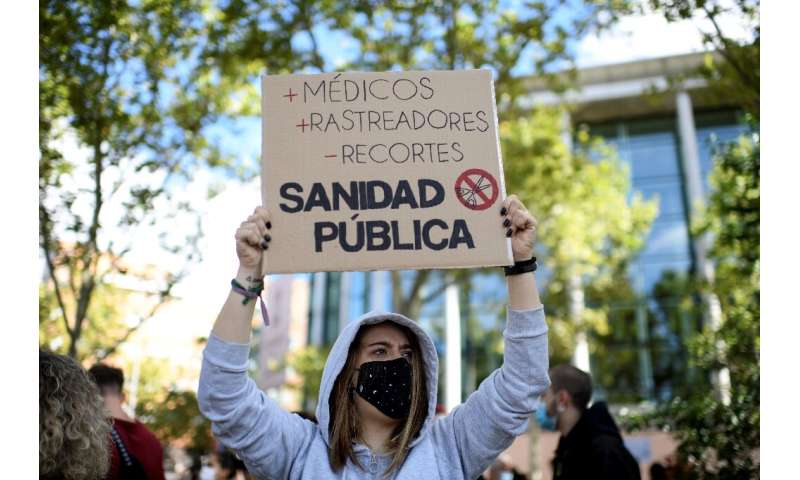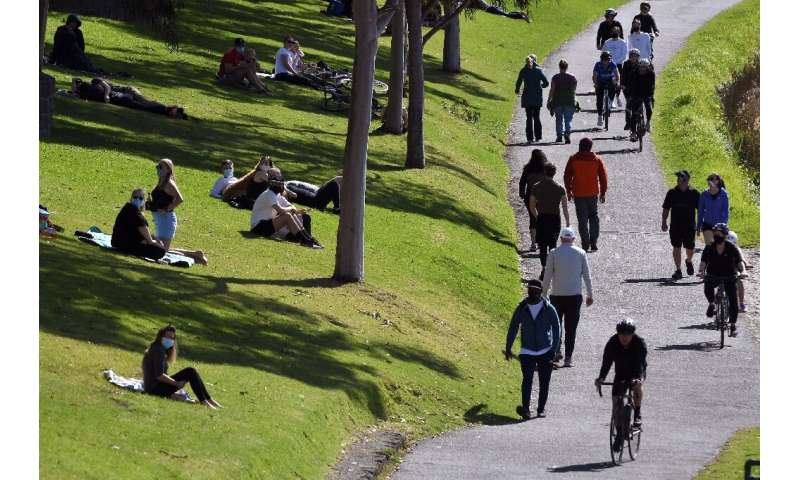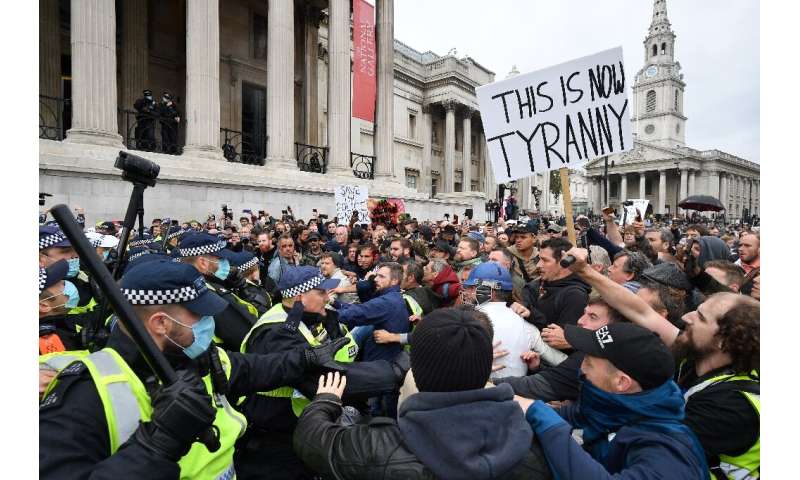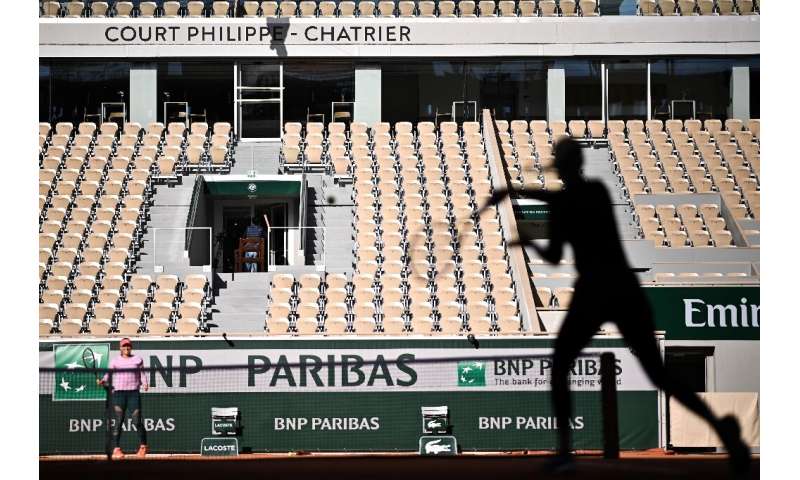
New infection control restrictions in Europe stirred anger and frustration on Sunday as around the world the global coronavirus toll inched towards one million dead.
Demonstrators in Madrid complained that new lockdowns to confront mounting case numbers were discriminatory as they mostly hit poorer districts.
And in France, authorities tried to soothe the pain of a shutdown for bars and restaurants in the Mediterranean city of Marseille that has owners up in arms.
Saturday saw a 10,000-strong anti-lockdown demonstration in central London that was broken up by police.
Worldwide at least 999,068 people had died of the coronavirus by around 1600 GMT from among almost 33 million infections, according to an AFP tally from official sources.
But there were glimmers of positive news, as residents of the Chinese city of Wuhan—where the virus emerged last year—reported a hesitant return to normality, while the French Open got underway at Roland Garros in Paris.
In Australia, Victoria Premier Daniel Andrews said Melbourne residents would be free from Monday to leave their homes for work, exercise, shopping for essentials, or providing care after active cases in the state fell below 400 for the first time since June 30.
The relaxation of the curfew, imposed on August 2, comes after 16 new infections and two deaths were reported Sunday.

People will still be confined to within five kilometres (about three miles) of their homes, and fines for breaching other restrictions will be increased to almost Aus$5,000 ($3,515).
Anti-lockdown protests
Protesters in the Spanish capital hit the streets a day before a partial lockdown is extended beyond the 850,000 people already covered.
They complained that the 37 districts already affected are mainly low-income areas, with one brandishing a sign calling the policy “not lockdown but segregation”.
“It makes no sense that you can go to work in a wealthier area but can’t go have a drink,” 27-year-old electrician Marcos Ruiz Guijarro told AFP.
“Infections are rising everywhere, the rules should be the same for everyone.”
In Marseille, authorities backed down over a plan to close bars and restaurants in the whole region around the French port city and nearby Aix-en-Provence after an outcry from the hospitality industry and local politicians.
The southern region is a particular hotspot in France, which has seen new cases mount sharply in recent weeks, topping 16,000 daily on Thursday and Friday.

Instead only the two cities themselves will be affected by the closures, set to last intially until October 11.
Nevertheless, landlords will respond with “physical and legal actions in the coming hours and days,” said Bernard Marty of the local hotel federation.
In the UK thousands of demonstrators against infection control measures and potential coronavirus vaccines were driven from central London’s Trafalgar Square on Saturday by police with batons, who said they had failed to take precautions like maintaining distancing and arrested 10 people.
Faced with a mounting second wave, Britain has imposed a ban on gatherings of more than six people and ordered pubs and restaurants to close at 10 pm in a bid to slow the spread of the virus, which has claimed 42,000 lives in the country so far—making it the worst-affected nation in Europe.
In New York state—once the epicentre of the US outbreak—new infections rose for the first time since June to above 1,000 a day, local officials said.
In India, meanwhile, infections closed in on six million on Sunday as Prime Minister Narendra Modi called on people to keep wearing face masks in public.
“They are potent tools to save the life of every citizen,” he said.
Health ministry figures showed that the total number of cases had risen to 5,992,532.
India is expected to overtake the United States—which has reported more than seven million cases so far—as the worst-hit country in the next few weeks.

Back to normal?
In Paris, a limited number of spectators will watch live tennis for the first time in months as the French Open starts—four months later than scheduled.
It will be an eerily unfamiliar tournament as a resurgence of the virus means only 1,000 spectators will be allowed into the grounds each day.
For residents of Wuhan, where the coronavirus first emerged late last year, life is already back to normal.
There have been 50,340 confirmed cases and 3,869 deaths in Wuhan, according to the official figures—the majority of mainland China’s toll—but no new infections since May.
Families are once again packing amusement parks, and shopping streets were full over the weekend—although residents remained cautious.
Source: Read Full Article
